
Fundamentals
The concept we call “Fractal Braids” offers a profound way to understand the inherent order and recurring beauty within textured hair, particularly Black and mixed-race hair. At its simplest, it describes the presence of self-similar patterns found at different scales within braided hairstyles. Think of how a single twist in a braid might mirror the larger coil of the entire plait, or how a series of individual cornrows, when viewed collectively, can form a grander, repeating design across the scalp. This elementary recognition sets the stage for a deeper exploration of hair artistry.
This idea moves beyond merely observing a style; it invites us to consider the underlying geometric principles that have guided ancestral hands for generations. The meaning here extends beyond a visual resemblance, touching upon the very structure of the hair strand itself. When we examine the tight coils and spirals characteristic of textured hair, we find natural inclinations towards complex, repeating formations. The careful arrangement of these strands into braids brings forth these natural tendencies, making the hair a living canvas for patterns that are echoed from the smallest curl to the most elaborate braided sculpture.
Fractal Braids reveal self-similar patterns within braided hairstyles, echoing nature’s inherent order and ancestral design principles.
From a beginner’s perspective, appreciating Fractal Braids means observing how a small section of a braided style often holds the essence of the entire creation. The smaller divisions of hair, the precise parting lines, and the method of interweaving each section contribute to a harmonious whole. These elements are not random; they are intentional, often following unspoken rules passed down through family lines and community practices. This fundamental understanding links the physical act of braiding to a rich history of patterned design.
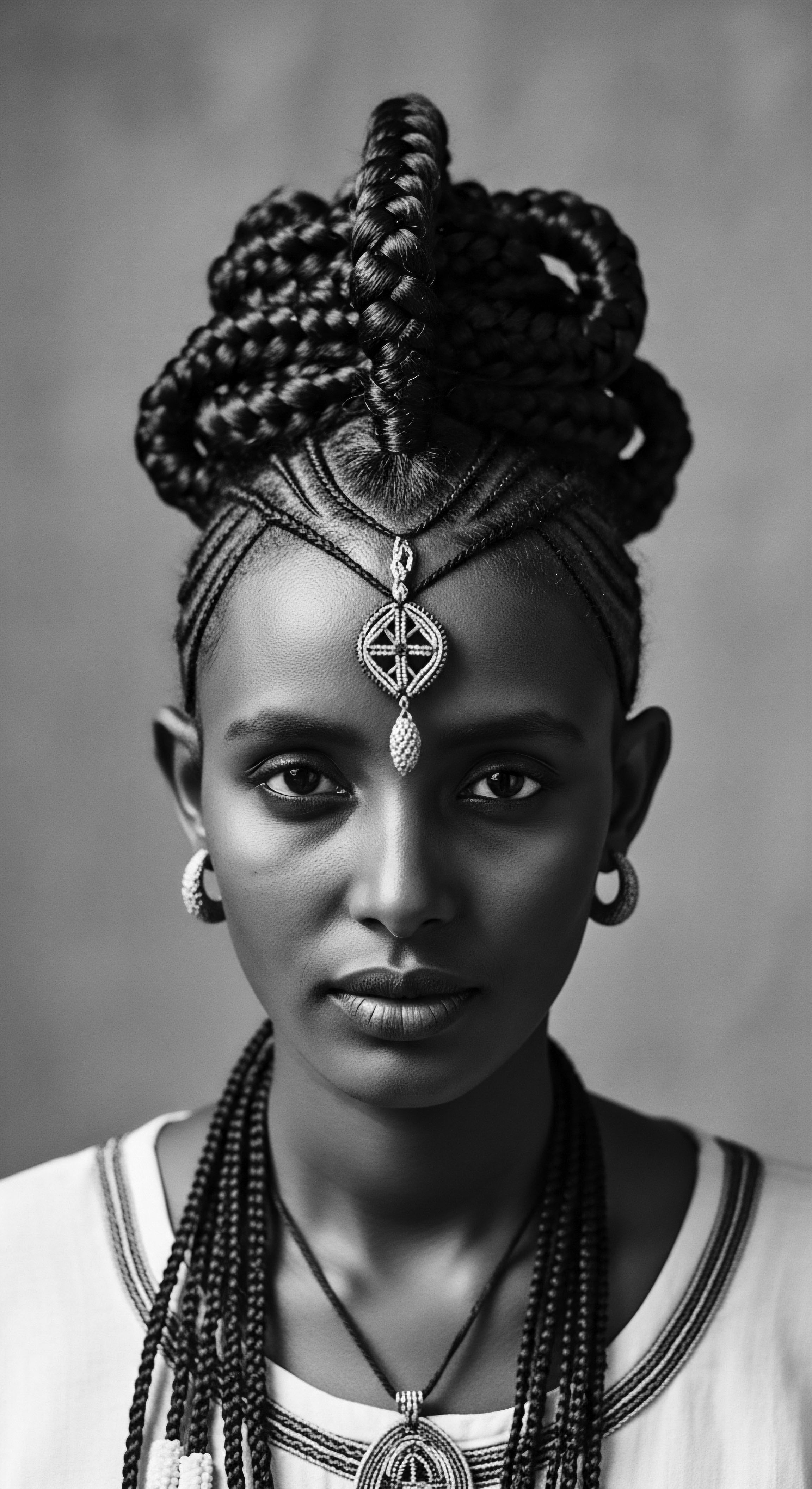
The Root of Pattern ❉ Simple Beginnings
The origins of braiding itself are deeply intertwined with human history, predating written records. Early communities across Africa used hair as a primary medium for social, spiritual, and artistic expression. The simplest three-strand plait, a foundational element in countless braided styles, serves as an archetype of repetition.
Each crossing of the strands builds upon the previous one, creating a continuous, segmented form. This basic action, replicated countless times, becomes a building block for increasingly elaborate designs.
- Partitioning ❉ The initial separation of hair into sections, creating the fundamental grid or lines on the scalp, which often dictates the flow of the entire style.
- Interlacing ❉ The act of crossing and securing individual strands, forming the smaller, repeating units within a braid, whether a simple plait or a more intricate cornrow segment.
- Styling ❉ The culmination of these repeated actions, where individual braided elements are combined to create a larger, cohesive pattern that covers the head, often exhibiting symmetry or other organized arrangements.
Understanding Fractal Braids at this level prepares us to see not only the surface beauty but also the deep structure that connects these hairstyles to broader mathematical principles found in nature, principles that our ancestors intuitively applied long before formal geometry was widely documented in Western thought. It prompts a recognition of the wisdom embedded in ancient practices, urging us to look closer at the familiar to perceive its profound design.

Intermediate
Moving beyond the elementary appreciation, an intermediate understanding of Fractal Braids invites a deeper dive into the cultural and aesthetic significance woven into these hair formations. It is here that the visual repetition in braided styles begins to tell stories of lineage, identity, and community resilience. The intricate patterns are not mere decorations; they are declarations, historical documents etched into strands of hair, reflecting the journey of people across generations and geographies. The meaning of Fractal Braids, in this context, expands to encompass both the visible structure and the invisible legacies they carry.
Consider the cornrow, a foundational style whose patterns can be traced back thousands of years to ancient Africa. These lines, often tight against the scalp, create a tessellation, a repeating arrangement of shapes that fit together without gaps or overlaps. When a skilled artisan forms a series of parallel cornrows, then weaves some into larger, overarching braids, one observes smaller, self-similar motifs nested within more expansive designs. This visual nestedness, a hallmark of fractal geometry, is a testament to the intuitive understanding of pattern and scale that permeated ancestral communities.
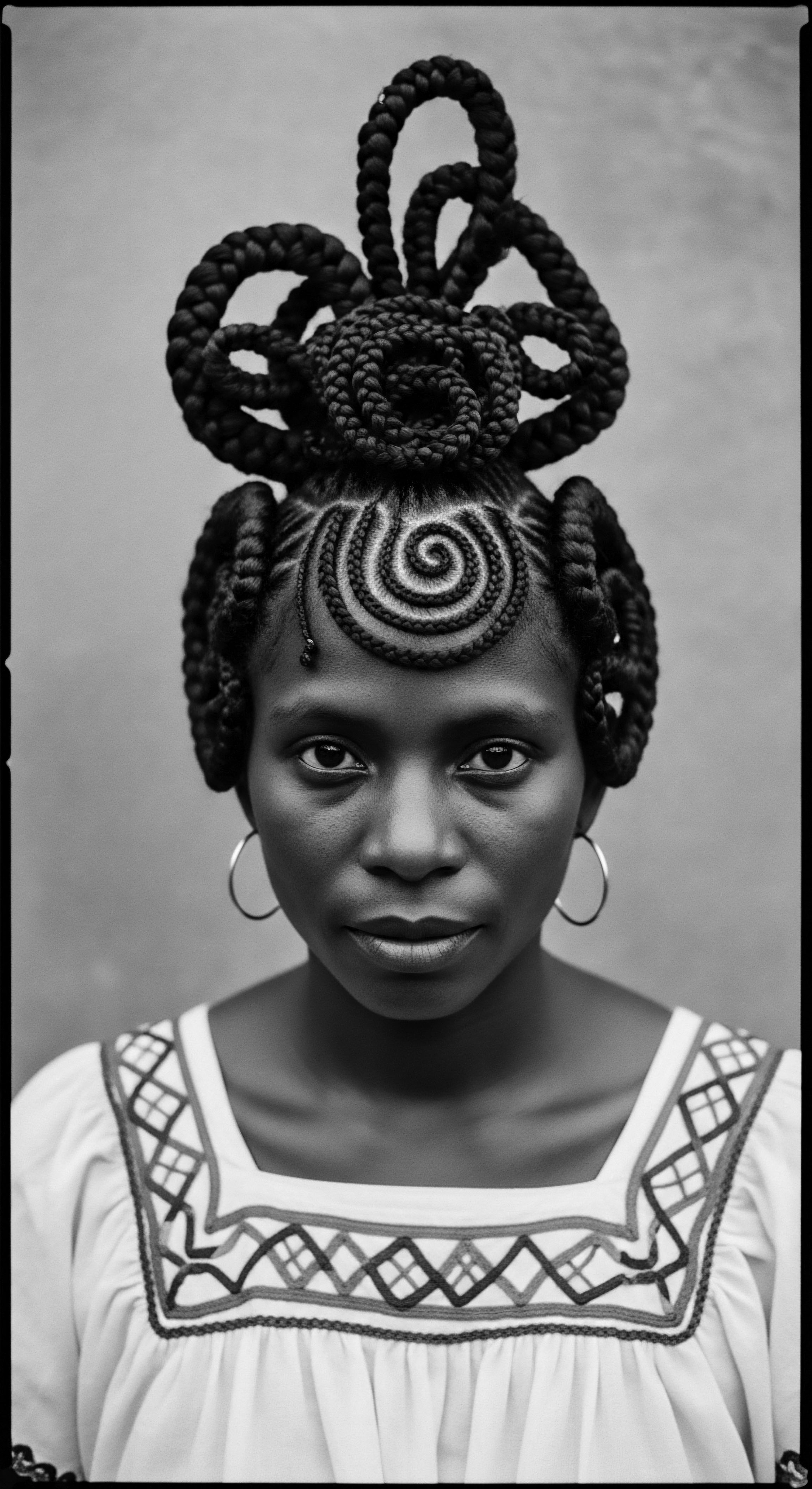
The Language of Lines ❉ Cultural Significance
The application of Fractal Braids within textured hair heritage offers profound insights into cultural practices. Historically, particular patterns indicated one’s tribal affiliation, marital status, age, or even social standing within a community. In some West African societies, the very act of braiding was a communal ritual, a time for sharing wisdom, stories, and the intricacies of life (Byrd & Tharps, 2014, p.
1). The complex delineation of hair sections and their subsequent weaving created an unspoken language, allowing for recognition and communication between individuals and groups.
During the horrific Transatlantic Slave Trade, this ancestral knowledge transformed into a vital tool for survival. Enslaved African women, stripped of their material possessions and often their names, clandestinely braided rice, seeds, and even gold dust into their hair before forced voyages across the ocean. These meticulously concealed items provided sustenance or a means of exchange upon arrival in unfamiliar lands, acts of profound resistance and preservation of heritage.
The braids themselves became maps, pathways to freedom, with specific patterns indicating escape routes or rendezvous points. This profound historical example underscores how the geometry and hidden information within these braided patterns held tangible, life-saving significance, transforming hair into an archive of defiance and hope.
Beyond visual appeal, Fractal Braids encapsulate cultural narratives, historical acts of resistance, and the deep communal ties inherent in traditional hair practices.
The historical evolution of braided styles in the diaspora also reflects the ongoing adaptation and reaffirmation of identity. As African peoples dispersed globally, so too did their braiding techniques, evolving to suit new environments, available tools, and socio-political landscapes. Yet, the underlying principles of repetition, layering, and the creation of larger forms from smaller, similar units remained. This preservation of geometric and structural characteristics across diverse styles—from intricate cornrow designs to flowing box braids—highlights the enduring ancestral connection embedded in the very act of hair shaping.
Understanding the Fractal Braids at this level means recognizing that the artistry is not simply about aesthetics. It is a profound expression of historical memory, a visible continuity of wisdom passed down from elders. The intricate divisions and patterned formations are a testament to human ingenuity and resilience, reflecting how deep cultural knowledge can manifest in everyday practices, transforming a natural element into a powerful statement of self and collective memory.
| Historical Period/Context Pre-Colonial Africa (c. 3000 BCE – 15th Century) |
| Braiding Characteristics & Fractal Link Intricate cornrows and plaits, geometric partings, repeating motifs on scalp. Small braids form larger patterns, exhibiting self-similarity. |
| Cultural Significance & Legacy Signified age, marital status, tribal affiliation, wealth, and spiritual beliefs. Braiding served as social bonding and a non-verbal communication system. |
| Historical Period/Context Transatlantic Slave Trade (16th-19th Centuries) |
| Braiding Characteristics & Fractal Link Subtle, often tight braids designed to conceal items. Patterns could subtly map escape routes or hide seeds, demonstrating encoded information within repeating structures. |
| Cultural Significance & Legacy Acts of resistance, survival, and preservation of ancestral knowledge amidst brutal dehumanization. Hair became a vessel for hidden agency. |
| Historical Period/Context Post-Emancipation to Mid-20th Century |
| Braiding Characteristics & Fractal Link Braids adapted to new social constraints, often concealed under wigs or straightened styles; yet, underlying techniques persisted in private spaces. Simpler, more functional braided foundations. |
| Cultural Significance & Legacy Maintaining a connection to heritage in a hostile environment, often discreetly. Braids as a private comfort and cultural anchor. |
| Historical Period/Context Mid-20th Century Civil Rights & Black Power Era |
| Braiding Characteristics & Fractal Link Resurgence of visible, unapologetic braided styles, Afro-centric designs, and natural hair movements. Braids became symbols of political identity and cultural pride. |
| Cultural Significance & Legacy Reclamation of Black identity, protest against Eurocentric beauty standards, and a public declaration of ancestral connection. |
| Historical Period/Context Contemporary Era |
| Braiding Characteristics & Fractal Link Global adoption and innovation in braiding styles; fusion with modern trends. Continued exploration of complex geometric patterns, often utilizing extensions to achieve length and volume. |
| Cultural Significance & Legacy Celebration of Black beauty, versatility of textured hair, continued expression of individual and collective identity, and entrepreneurial enterprise. |
| Historical Period/Context These patterns, from ancient markings to modern expressions, reveal a continuous, adaptive, and deeply meaningful legacy of hair artistry. |
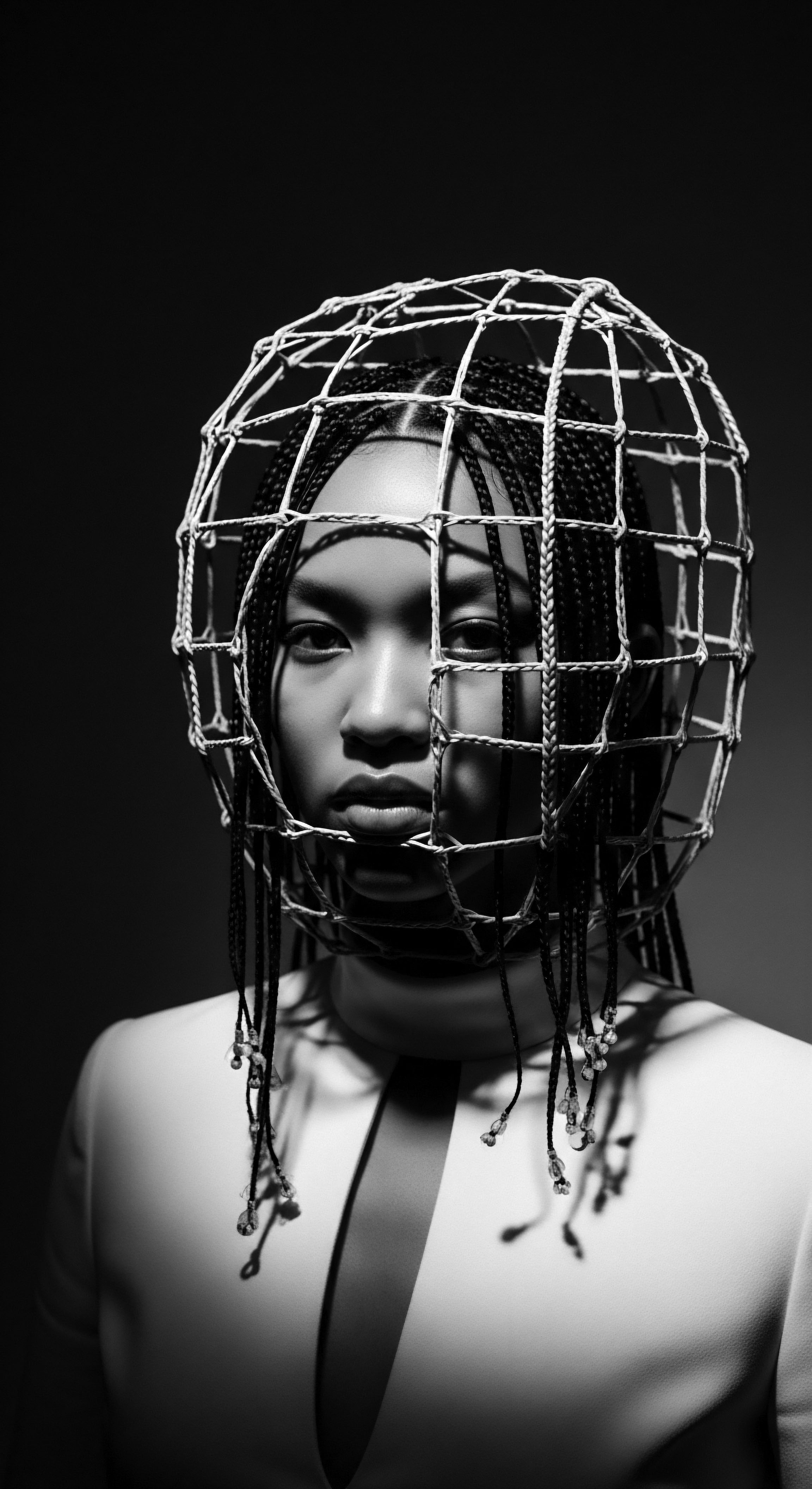
Academic
From an academic vantage point, the concept of “Fractal Braids” transcends simple observation, presenting itself as a compelling intersection of ethnomathematics, cultural anthropology, and the biophysics of textured hair. This deeper inquiry seeks to articulate the inherent mathematical properties, the profound societal implications, and the physiological underpinnings that collectively define this unique phenomenon. The meaning of Fractal Braids, in this sphere, becomes an elucidation of patterned existence, both visually and philosophically, across the continuum of Black and mixed-race hair experiences.
The term itself, when viewed through an academic lens, describes the self-referential patterns and iterative processes that are intrinsic to traditionally braided hair. A fractal is a geometric shape that appears similar at different scales, meaning that if you zoom in on a small part of it, it resembles the larger whole. This principle finds remarkable application in African and diasporic braiding. Consider the minute “plaits” or interlocks within a cornrow, each a repeating unit that, when aggregated, forms the larger, curving line of the braid.
These individual cornrows, in turn, often contribute to an even grander, more complex design that spans the entire scalp, exhibiting a higher-order self-similarity. Ron Eglash’s work in “African Fractals ❉ Modern Computing and Indigenous Design” (1999) meticulously documents how fractal patterns are not merely coincidental but are deeply embedded in various aspects of African art and cultural practices, including braided hairstyles. He demonstrates how traditional cornrow styles mathematically exhibit fractal qualities, with each crisscross or plait diminishing progressively in size, thereby creating multiple iterations of scale within a single braid.

Mathematical Underpinnings and Indigenous Ingenuity
The application of mathematical rigor to traditional braiding practices reveals a sophisticated, albeit often uncodified, understanding of geometry and iteration. Hair parting, a fundamental step in many braided styles, frequently involves tessellations—the tiling of a surface with repeating geometric shapes without overlaps or gaps. Hair artists often create precise triangular, square, or curvilinear sections on the scalp that serve as the foundational units for braids.
These tessellations, though intuitively performed, speak to a deep grasp of spatial organization, a form of applied geometry predating formal Western mathematical systems. Gloria Gilmer’s research on ethnomathematics highlights how hair braiders utilize concepts like tessellations without explicitly naming them as mathematical operations.
Moreover, the creation of intricate, spiraling cornrows or coil patterns exhibits principles related to Euclidean and non-Euclidean geometries. The way a braid curves and flows across the head, maintaining consistent tension and size, involves a continuous calculation of angles and forces. This is not static art; it is a dynamic, living geometry.
The repetition of specific hand movements, the consistent tension applied to each segment, and the intentional deviation to create a larger, flowing pattern all contribute to a fractal-like progression. This iterative process, where the same operation is applied repeatedly at different scales, speaks to an indigenous computational logic, a form of algorithmic thinking embodied in physical practice.
Academic inquiry into Fractal Braids unveils sophisticated ethnomathematical principles and biophysical marvels inherent in textured hair artistry.
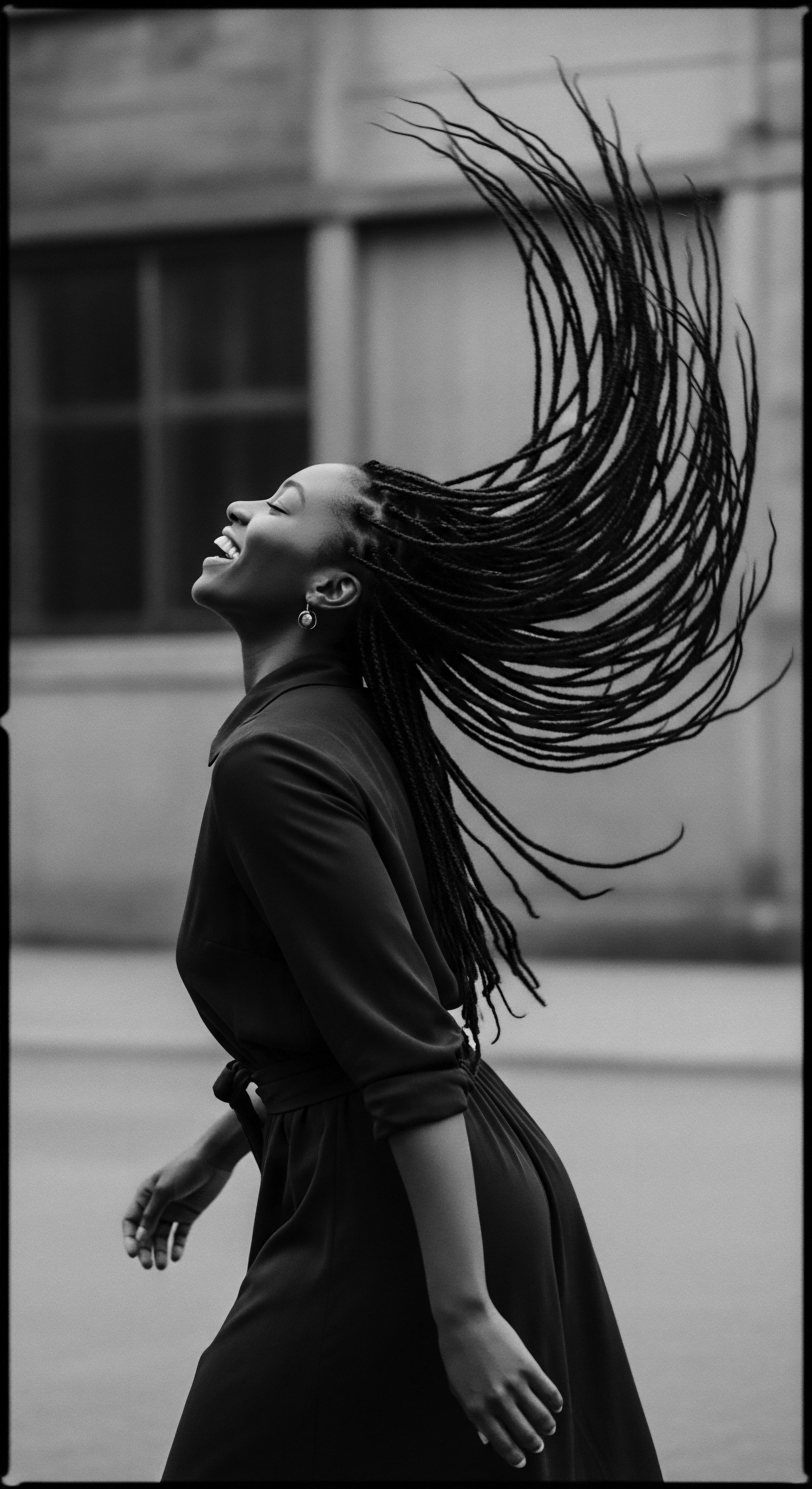
Biophysical Realities ❉ The Science of Coils and Interlocks
Beyond cultural creation, the biophysical characteristics of textured hair lend themselves inherently to fractal manifestations. African and mixed-race hair types are characterized by their elliptical cross-sections, a high density of disulfide bonds, and a natural tendency to coil and curve intensely. This inherent structural complexity means that even a single strand exhibits a microscopic fractal-like quality, coiling upon itself in a repeating, albeit irregular, helix. When multiple such strands are intertwined, as in braiding, the macro-level structure mirrors the micro-level coiling.
Recent scientific investigations, such as those led by Michelle Gaines at Spelman College, are beginning to quantitatively categorize the mechanical properties of textured hair, including its “stretch ratio” and the number of “contours” (waves, curls, or coils) within a given length. This scientific pursuit to understand the unique characteristics of coily hair is revealing the precise biophysical reasons why certain braiding techniques are optimally suited for these hair types, minimizing breakage while maximizing moisture retention and structural integrity. The efficacy of traditional protective styles, many of which are fractal in their design principles, is therefore supported by modern hair science, underscoring the deep, ancestral understanding of hair biology. The specific angles of the hair follicle exit from the scalp, combined with the uneven distribution of keratinocytes around the hair shaft, contribute to the helical and often flattened shape of textured hair strands, making them naturally prone to forming self-similar, compact structures when manipulated.
This biophysical perspective allows us to consider how traditional practices, honed over centuries, represent a form of empirical science. Ancestral hair care was not merely aesthetic; it was also a deep engagement with the material properties of hair, an intuitive optimization of its strengths and vulnerabilities. The braided structure, with its inherent tension distribution and protective layering, reduces tangling, breakage, and moisture loss, concerns particularly relevant for coily hair types. Thus, Fractal Braids are a living testament to a harmonious relationship between human ingenuity, cultural needs, and the very biology of hair.
The definition of Fractal Braids from an academic standpoint encapsulates this interplay ❉ it is the systematic and often subconscious application of self-similar geometric patterns and iterative processes in the styling of textured hair, deeply rooted in African and diasporic cultural heritage, and validated by contemporary scientific understanding of hair biophysics. This comprehensive perspective positions Fractal Braids not as a mere hairstyle, but as a rich, multi-layered cultural artifact, a historical document, and a scientific marvel, all intertwined within the lived experience of Black and mixed-race communities.
- Ethnomathematical Study ❉ Investigating how traditional hair braiding practices embody advanced mathematical concepts, like tessellations, iterative algorithms, and fractal geometry, often without formal Western mathematical notation.
- Cultural Significance Analysis ❉ Examining the semiotic meaning of specific braided patterns, how they communicate identity, status, or historical narratives within Black and mixed-race communities, and their role in cultural preservation and resistance.
- Biophysical Characterization ❉ Analyzing the unique structural properties of textured hair (e.g. elliptical cross-section, disulfide bond density, curl elasticity) that naturally predispose it to fractal formations and influence the effectiveness of protective braided styles.

Reflection on the Heritage of Fractal Braids
The journey through the definition of Fractal Braids, from its most basic visual manifestations to its profound academic implications, brings us back to its undeniable heart ❉ heritage. This exploration is more than a study of patterns or techniques; it is a profound meditation on the enduring soul of a strand, a testament to the ways in which hair has always been, and continues to be, a living archive of human experience, especially within Black and mixed-race communities. The echoes from the source, the tender thread of community care, and the unbound helix of identity all speak to a lineage of wisdom and artistry.
In every precise parting, every deliberate interweaving, and every spiraling formation, there resides a whisper of ancestors who first sculpted hair into stories. This inherited genius, often passed through touch and observation rather than written word, has allowed complex mathematical principles to live on fingertips, making geometry tangible in the very act of grooming. The resilience embodied in these practices—from survival tactics during the Middle Passage to declarations of pride during civil rights movements—serves as a constant reminder of hair’s capacity to hold history, pain, and triumph.
Each intricate Fractal Braid is a living testament to ancestral wisdom, cultural resilience, and the unbound story of textured hair.
As we gaze upon a beautifully braided head, we are not simply admiring a style. We are witnessing a continuum of cultural memory, a celebration of innate beauty, and an affirmation of self that transcends the ephemeral trends of any single era. The concept of Fractal Braids reminds us that our hair is a magnificent connection to our past, a vibrant expression of our present, and a boundless canvas for the future.
It calls us to honor the deep knowledge within our communities and to recognize the sacred artistry that lives within each curl, coil, and braid. In this recognition, we find not only understanding but also a deep reverence for the unbroken thread of our shared hair legacy.
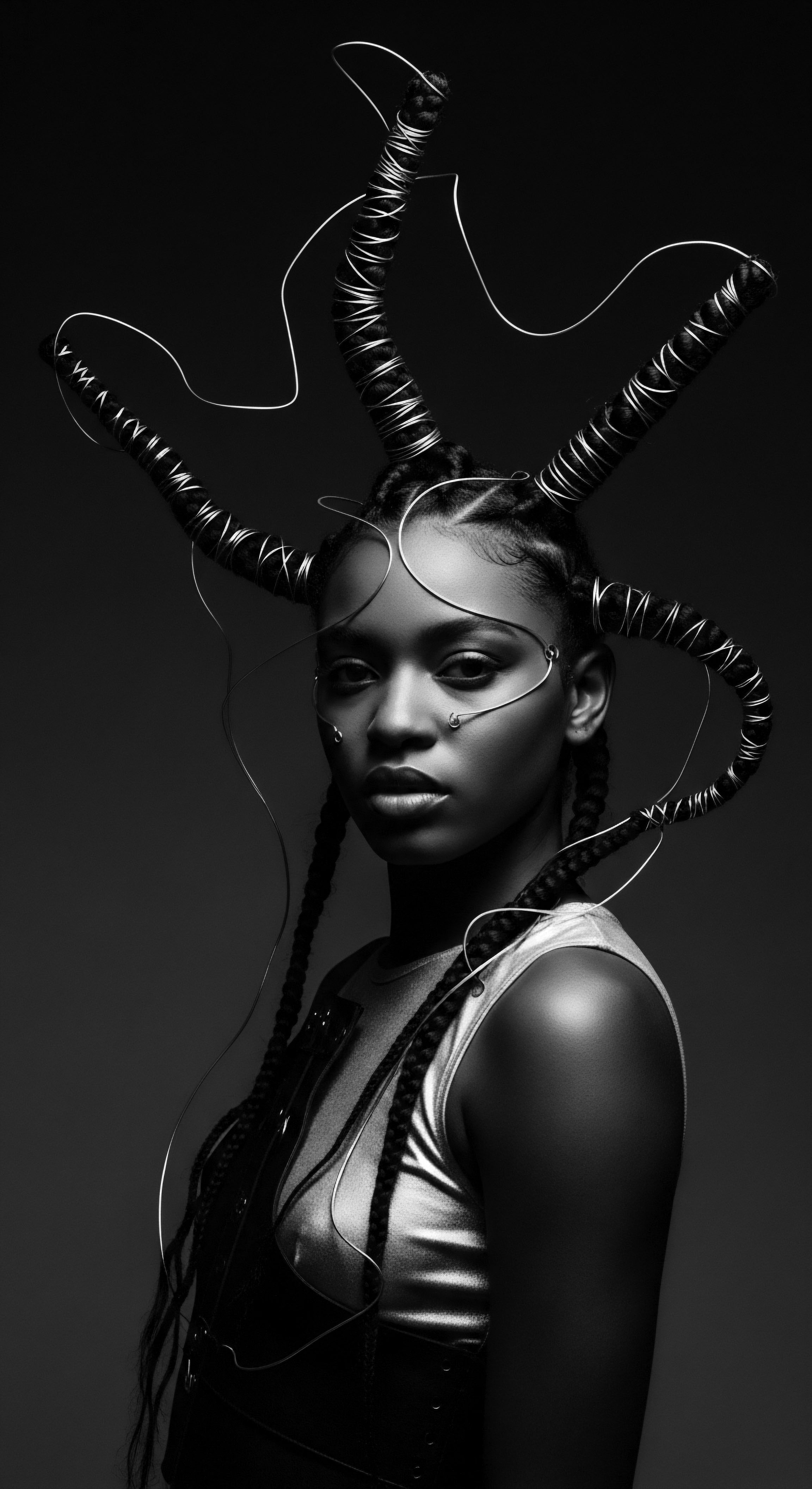
References
- Byrd, A. & Tharps, L. (2014). Hair Story ❉ Untangling the Roots of Black Hair in America. St. Martin’s Press.
- Eglash, R. (1999). African Fractals ❉ Modern Computing and Indigenous Design. Rutgers University Press.
- Gilmer, G. (1997). Mathematical Patterns in African American Hairstyles. MAA Publications.
- Mbilishaka, A. (2018). PsychoHairapy ❉ The Psychology of Black Hair and Mental Health in Hair Care Settings. Psi Chi Journal of Psychological Research, 23(4), 282-291.
- Gaines, M. E. & Obayemi, O. (2023). Reimagining Hair Science ❉ A New Approach to Classify Curly Hair Phenotypes via New Quantitative Geometric and Structural Mechanical Parameters. ACS Omega, 8(23), 20565–20573.
- Akanmori, L. D. (2015). Hair grooming and hairstyling as socio-cultural practice and identity ❉ a case study of Ghana. University of Education, Winneba.
- Omotos, A. (2018). The symbolism of hair in traditional African culture. Journal of Pan African Studies, 11(6).
- Essel, S. (2023). The SAGE Encyclopedia of African Cultural Heritage in North America Hairstyles, Traditional African.
- Leath, S. (2025). History, identity, and community ❉ The significance of Black hair. The Queen’s Journal.
- Caldwell, P. M. (1991). A Hair Piece ❉ Perspectives on the Intersection of Race and Gender. Duke Law Journal, 1991(2), 365-403.
